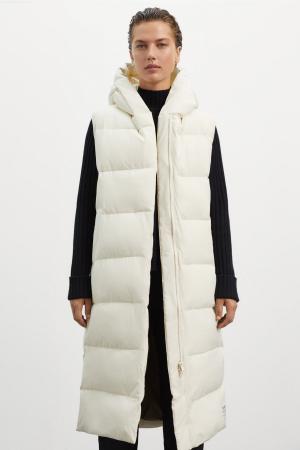
How Fast Fashion is Destroying the Planet and How to Fight It

Fast fashion, or rapid fashion, is a phenomenon that has fundamentally changed the way we consume and perceive clothing. However, its popularity also raises questions about the sustainability and ethical aspects of this trend. What are the consequences of fast fashion for our planet and society?
What is fast fashion?
Fast fashion is a term that describes the production of clothing that quickly reflects the latest fashion trends and is sold at low prices. This model allows fashion brands to quickly respond to changes in trends and offer customers new products in a short time. The goal is for customers to be able to purchase current fashion pieces without a significant financial commitment.
Fast fashion manufacturers often use cheap materials and labor to reduce production costs. This enables them to produce large quantities of clothing at low prices. However, this model is often realized at the expense of quality and durability of clothing. The result is clothing that wears out quickly, encouraging customers to shop more frequently and replace old pieces with new ones.
Try our natural products
One of the biggest problems associated with fast fashion is its impact on the environment. Clothing production is resource-intensive, including water, energy, and raw materials. For example, approximately 2700 liters of water are used to produce a single cotton t-shirt. This enormous ecological footprint is further exacerbated by the fact that much fast fashion clothing ends up in landfills after a very short period of use.
Moreover, the chemicals used in the production and dyeing of textiles often pollute watercourses and soil, which has negative impacts on ecosystems and human health. Furthermore, the textile industry is responsible for a significant portion of global greenhouse gas emissions, contributing to climate change.
Recycled Clothing as a Solution?
One possible solution to the problems associated with fast fashion is clothing recycling. Recycled clothing can help reduce waste and the consumption of new raw materials. There are several ways clothing can be recycled. The first method is fiber recycling, where used textiles can be broken down into individual fibers that can be reused to make new textiles. This process allows for the efficient use of already existing materials and reduces the need for new raw materials. Another method is upcycling, where old clothing is transformed into new fashion pieces.
This process often involves redesigning and adapting the original clothing, creating unique and original pieces that can find their place in the wardrobe again. The third method is donation and second-hand sale, where used clothing can be donated or sold in second-hand stores. This method extends the life of clothing and reduces the demand for new clothing, thus reducing the pressure on the production and consumption of new raw materials.
Try our natural products
But is recycling really a sufficient solution? Clothing recycling can reduce waste but does not prevent the creation of new waste. Moreover, not all clothing can be easily recycled due to mixed materials and chemical treatments. Many garments are made from a combination of different materials that are difficult to separate and recycle. Chemical treatments, such as dyes and finishes, can also complicate the recycling process. Therefore, although clothing recycling represents an important step towards sustainability, it cannot be the sole solution.
We must also re-evaluate our shopping habits, invest in quality and durable clothing, and support brands that are committed to ethical and ecological production. Only by combining these approaches can we achieve real change and create a more sustainable fashion industry.
Sustainable Fashion as an Alternative
Sustainable fashion is a response to the problems associated with fast fashion. Its goal is to minimize negative environmental impacts and improve social conditions throughout the production chain. This approach includes several key principles focusing on various aspects of fashion production and consumption.
The first principle is ethical production. This means ensuring fair working conditions and wages for workers in the textile industry. Many workers in the garment industry, especially in developing countries, work for very low wages and in dangerous conditions. Ethical production aims to improve these conditions and ensure that workers are fairly compensated for their work and have a safe working environment.
The second principle is ecological materials. Sustainable fashion supports the use of natural and organic materials that have a smaller impact on the environment. This includes materials that are biodegradable or recyclable, and also those grown without harmful chemicals. Using ecological materials helps reduce pollution and the consumption of natural resources.
The third principle is durability and quality. Sustainable fashion focuses on producing clothing that is high-quality and durable, reducing the need for frequent replacement. Quality clothing lasts longer, thus reducing the amount of waste generated from discarded clothing. Consumers are encouraged to invest in garments that last longer, rather than frequently buying cheap and low-quality items.
The fourth principle is transparency. Sustainable fashion involves providing information about the origin and production of clothing so that customers can make informed decisions. Transparency in the supply chain allows consumers to know where their clothes come from and how they were made. This gives them the opportunity to support brands committed to ethical and ecological standards.
How Can We Contribute to Change?
Change begins with us, the consumers. What steps can we take to reduce our negative environmental impact and support sustainable fashion? The first step is to buy less but better. Investing in quality clothing that lasts longer is crucial. Quality pieces have a longer lifespan, reducing the need for frequent shopping for new clothing, which significantly reduces the ecological footprint.
The second step is to support sustainable brands. Seek out and support fashion brands that commit to ethical and ecological production. These brands often use ecological materials and ensure fair working conditions for their employees. Supporting such brands contributes to the development of a more sustainable fashion industry.
The third step is to take proper care of your clothing. Proper care can extend the life of your garments. Follow the recommendations on labels, avoid frequent washing and drying in the dryer. Instead, air-dry your laundry and wash only when necessary. This way, you not only extend the life of your clothing but also reduce energy and water consumption.
Try our natural products
The fourth step is upcycling and recycling. Before discarding old clothing, consider whether it could be reused or recycled. Upcycling means transforming old garments into new and stylish pieces. Recycling involves converting textiles into new materials that can be reused in clothing production.
The fifth and equally important step is buying second-hand clothing. Buying second-hand clothes is a great way to reduce demand for new clothing and support the circular economy. Second-hand stores offer unique and often quality pieces at affordable prices, allowing you to be stylish while being environmentally friendly.
Fast fashion undoubtedly plays a significant role in making fashion trends accessible to the general public. However, its negative impacts on the environment and society are too serious to ignore. Sustainable fashion and recycled clothing represent steps in the right direction, but real change begins with each of us. How can we re-evaluate our shopping habits and contribute to a more sustainable future for fashion? Perhaps it's time we started thinking more about what we wear and realized that every purchase we make has an impact.














